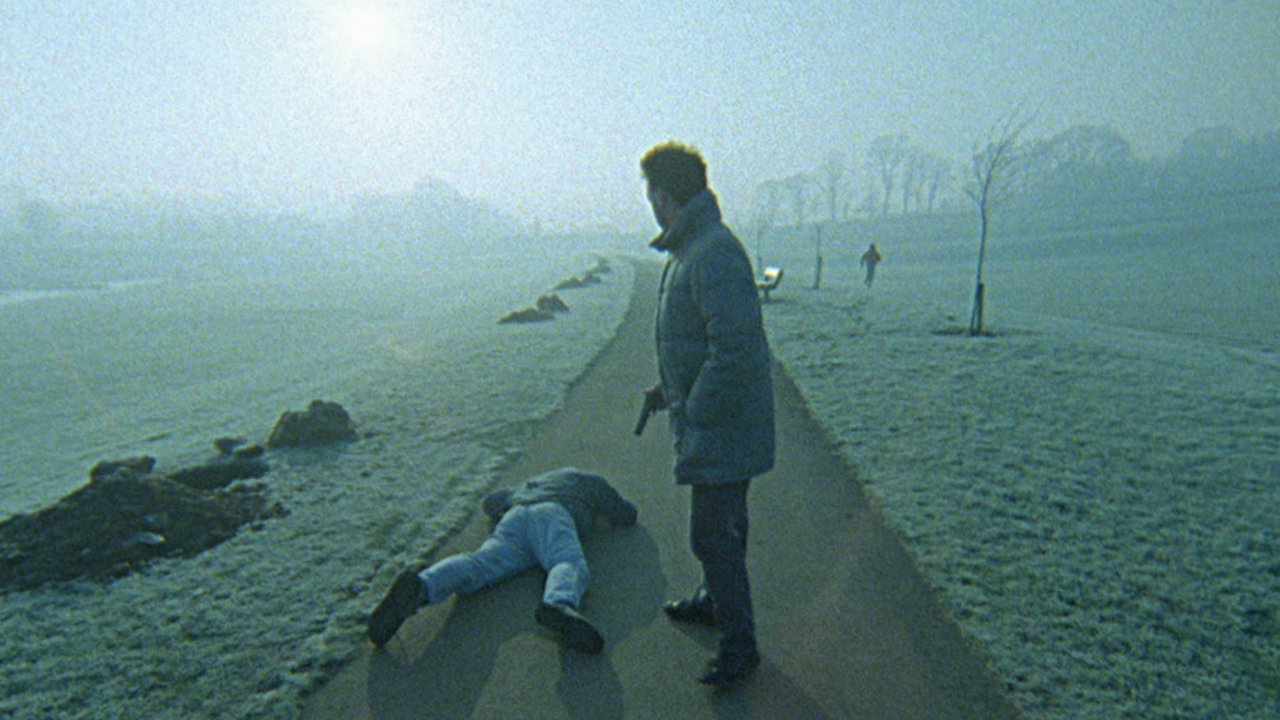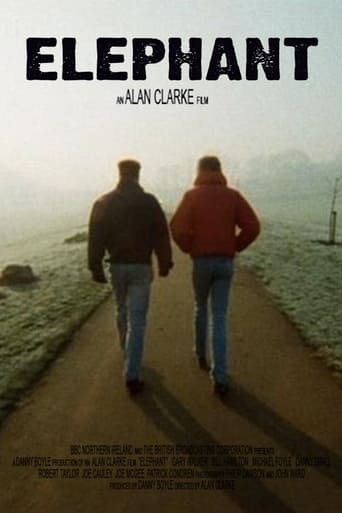

Stylish but barely mediocre overall
... View MoreOne of those movie experiences that is so good it makes you realize you've been grading everything else on a curve.
... View MoreExactly the movie you think it is, but not the movie you want it to be.
... View MoreOne of the film's great tricks is that, for a time, you think it will go down a rabbit hole of unrealistic glorification.
... View MoreThis short film serves two purposes. It provides a chilling perspective on the anonymity of civil conflict and it offers a meditation on violence in the media. The premise is equally primitive and thought- provoking. It simply follows around random, casually dressed men (who look like members of The Smiths and Big Country) as they slay other men in dilapidated Belfast settings. The minimal soundtrack of footsteps and gunfire creates a hypnotic and creepy atmosphere. All of the sound and lack thereof is necessary. The closeups of the handguns are necessary, as are the lingering shots of post-mortem bodies. Seconds can feel like minutes. Clarke's attempt to confront the audience forces us to ponder the dehumanization of The Troubles in Northern Ireland. The irony behind the appeal of this film is that for those who wish to watch violent action movies just for the sake of the spectacle of violence will be the most disappointed. That is exactly why this film is so important. It numbs us to violence. The lack of a narrative provides us the question of why we want to see what we are seeing. To turn gratuitous, prolonged violence into something boring becomes a statement on how desensitized a society can become to death and war.
... View MoreAlan Clarke's "Elephant" consists of a series of long Steadicam shots, each dispassionately following either assassins or their targets, and each culminating with someone being gunned down in cold blood. The film forces us to witness 18 murders, contains virtually no dialogue, and maintains a dry, detached, documentarian tone throughout.The film's title refers to the many murders – elephants in the room which were routinely overlooked by the local media - which took place within Northern Ireland during "The Troubles", a roughly three decade long period in which Northern Ireland's Roman Catholic, nationalist community, were at odds with its Unionist Community, who identified themselves as being British. The film is designed to convey a certain inexorable feeling, that violence begets violence, that these killings are pointless, senseless, horrific, futile and directed against ordinary, innocent, working class people, but Clarke's removal of all historical context will baffle and mislead modern audiences, and the film – schematic and calculated – at times partakes in the same cruelty it abhors.If the film is simplistic, it does well (perhaps unintentionally), to banalize the violence it presents. By the 18th killing, you're no longer shocked, and are left instead with an overwhelming sense of frustration and futility. This captures not only the desensitisation of late 80s Northern Ireland, but the moment when desires arose for the pursuit of other solutions.The film hit 80s Britain like a bolt of lighting. Clarke, known for his social realism, had shocked before, but here his angry cry for peace was deemed particularly timely. Some semblance of peace was achieved four years later, with the 1994, First Ceasefire agreement.8/10 – Worth one viewing. The film would have a huge influence on Gus Van Sant's "Elephant".
... View MoreI was greatly amused at the writing credit for Bernard MacLaverty. Oh, you mean when that one guy said nothing or that other man didn't speak. Yeah, that's quotable stuff, all right. Certainly he wrote placement material used by the producer, although it is an absolute affront to say that he "wrote" anything.Still, it does give me a specific to use when pretentious people drool over lesser-known films. I can now praise MacLaverty's dialog and see what unfolds from there.The anonymity of the actions does reinforce the idea that violence can come at any turn and is never a proper solution. For that, I appreciated the film and its intent.
... View MoreI already gave my comments as Bart-53. Gus vanSant made my day by putting this movie as a feature on his DVD by the same name (Elephant). It was quite a few years ago that I saw this movie on TV and I have regretted ever since that I did not tape it to VHS as I had done with all the other films by Alan Clarke (the BBC showed most of his movies over a period of some weeks). Other beauties by Alan Clark are Scum (introducing Tim Roth) and The Firm (introducing Gary Oldman). I thought I would never see this movie ever again until I recently rented Gus vanSant's Elephant. According to the interview with him, which is also a feature on his DVD, he was made aware of Alan Clarke's movie by a friend. Gus vanSant's Elephant is an entirely different movie (based on the Columbine killings), but he was definitely influenced by Alan Clarkes style of filming (long steadycam shots in which we follow characters). Although the topic is no longer an issue (Northern Ireland killings) this is still a must-see movie.
... View More